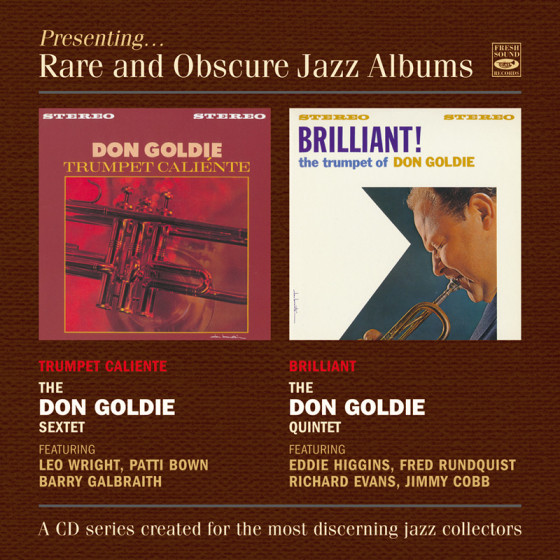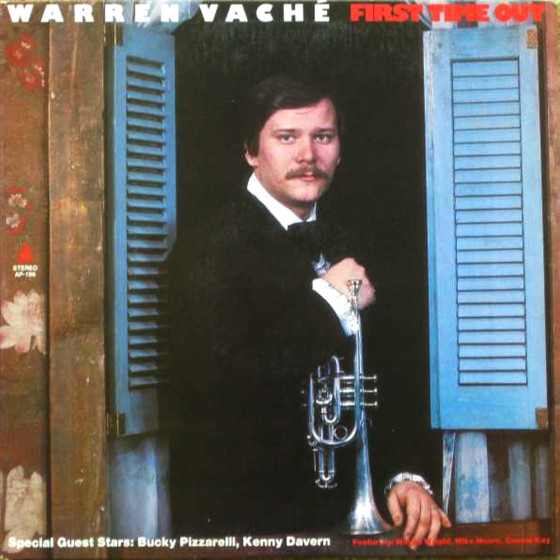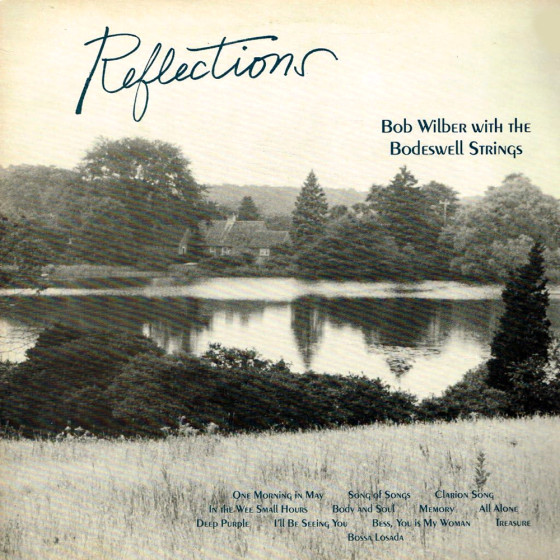No products
The Six
Complete Recordings 1954-1956 (2-CD) + Bonus Tracks
Fresh Sound Records
Personnel:
Johnny Glasel (tp), Jerry Blumberg (cnt), Porky Cohen, Sonny Truitt, Ed Hubble, Bob Mielke (tb), Bob Wilber (cl, ts, ss), Tommy Goodman, Bob Hammer, Dick Wellstood (p), Jeff Stewart (g), Bob Petersen, Bill Brito, Charlie Treager (b), Eddie Phyfe, Jackie Moffit, Jim Gribbon, Dennis Strong (d)
Reference: FSRCD1116
Bar code: 8427328611169
This CD set includes a 20-page booklet with an essay by the producer, photos, illustrations, detailed personnel, recording dates, and the original liner notes from the albums.
The Six made their first appearance in 1954 at Jimmy Ryan’s, the New York club located on 52nd Street. The group was the brainchild of clarinetist and saxophonist Bob Wilber, Sidney Bechet protégé and leader of the Wildcats, a Dixieland group he put together while he was in Scarsdale High in 1946. He would later go on to study with Lenny Tristano and Leon Russianoff.
Wilber and two of his former Wildcats bandmates —trumpeter Johnny Glasel and drummer Ed Phyfe— joined three newcomers —pianist Tommy Goodman, trombonist Porky Cohen, and bassist Bob Petersen and became The Six. Right from the start, their credo was to play without regard to the restrictions of schools or styles. And as a unit, they were a decidedly cooperative organization, with no one member being the leader.
After The Six released their first album for producer Norman Granz’s Norgran label, Nat Hentoff gave it high praise in his 5-star review of Down Beat: “There is no group in jazz like it —its six solidly trained and experienced members are extraordinary at ease in all manner of jazz idioms, and they’re not afraid to let their emotions burst forth uninhibitedly.”
In the summer of 1955, Bob Hammer, Sonny Truitt, and Bill Britto replaced Goodman, Cohen, and Petersen. With the new line-up he appeared at the Newport Jazz Festival and recorded two more excellent albums, this time on the Bethlehem label, the second of which had Jackie Moffit on drums. The group disbanded shortly afterwards.
All three albums of The Six are included on this compilation, and it’s worth noting for collectors that the 10-inch Norgran is being reissued here on CD for the first time. As one New York jazz observer characterized The Six: “This is one band that can make a hot Vs. cool album all by itself.”
—Jordi Pujol
Tracklist
01. Take Six (Tommy Goodman) 3:11
02. Porky’s Blues (Robert Wilber) 3:10
03. St. James Infirmary (Joe Primrose) 3:00
04. Foggy Day (G. & I. Gershwin) 3:20
05. Little Girl Blue (Rodgers-Hart) 2:52
06. Riverboat Shuffle (Carmichael-Voynow-Parish) 3:01
07. Music to Sin By (Tommy Goodman) 3:03
08. Between the Devil and the Deep Blue Sea (Arlen-Koehler) 2:44
09. Tasty (Robert Hammer) 3:10
10. As Far As We’re Concerned (Wilber-Glasel) 4:53
11. Shifty (Sonny Truitt) 3:34
12. Serenata (Leroy Anderson) 3:49
13. Pink Ice (Robert Wilber) 4:14
14. Strange Diet (Bill Potts) 3:36
15. Old Folks (Robinson-Hill) 3:38
16. Itchy Fingers (Robert Hammer) 2:57
17. Two Kinds of Blues (Robert Wilber) 8:53
CD 2
01. Giggles (Bill Potts) 3:15
02. Phweedah (Robert Wilber) 6:37
03. Over the Rainbow (Arlen-Harburg) 2:08
04. The View from Jazzbo’s Head (Bill Britto) 3:15
05. Blue Lou (Sampson-Mills) 7:45
06. Our Delight (Tadd Dameron) 6:21
07. My Old Flame (Johnston-Coslow) 3:55
08. The Troglodyte (Bill Britto) 3:46
09. Weary Blues (Artie Matthews) 2:31
10. China Boy (Winfree-Boutelje) 2:48
11. Mixed Salad (Armstrong-Armstrong) 3:04
12. Willie the Weeper (Melrose-Bloom-Rymal) 3:00
13. Mabel’s Dream (Ike Smith) 2:34
14. Wild Cat Blues (Waller-Williams) 2:34
15. Blues for Fowler (Robert Wilber) 2:54
16. Once in a While (Edwards-Green) 2:21
17. I Can’t Say (Lil Hardin Armstrong) 3:12
18. When You Wore a Tulip (Percy Wenrich) 2:57
19. Old Fashioned Love (James P. Johnson) 3:05
20. Salty Dog (Charlie Jackson) 3:07
Album details
Sources CD 1:Tracks #1-8, from the 10” album THE SIX (Norgran MGN-25)
Tracks #9-17, from the 12” album THE SIX (Bethlehem BCP-28)
Sources CD 2:
Tracks #1-8, from the 12” album
“The View from Jazzbo’s Head” THE SIX (Bethlehem BCP-57)
Tracks #9-11, from the 10” album “Young Men with Horns” (Riverside RLP-2501)
Tracks #12-13, from the 78 rpm disc, Commodore 583.
Tracks #14-15, from the 78 rpm disc, Commodore 584
Tracks #16-20, from the 10” album “Young Men with Horns” (Riverside RLP-2501)
Note #16-20: Originally issued on 78 rpm discs on Rampart Records R-9512 (#16),
R-9504 (#17), R-9510 (#18), R-9506 (#19), R-9502 (#20)
Personnel on CD 1
Tracks #1-8: THE SIX
Johnny Glasel, trumpet; Porky Cohen, trombone; Bob Wilber, clarinet and tenor sax; Tommy Goodman, piano; Bob Petersen, bass; Eddie Phyfe, drums.
Recorded in New York City, April 1954
Tracks #9-17: THE SIX
Johnny Glasel, trumpet; Sonny Truitt, trombone; Bob Wilber, clarinet & tenor sax; Bob Hammer, piano; Bill Brito, bass; Eddie Phyfe, drums.
Recorded in New York City, July 1955
Personnel on CD 2
Tracks #1-8: THE SIX
Johnny Glasel, trumpet; Sonny Truitt, trombone; Bob Wilber, clarinet & tenor sax; Bob Hammer, piano; Bill Brito, bass; Jackie Moffit, drums.
Recorded in New York City, January 1956
Tracks #9-11: THE SCARDALE JAZZ BAND
Johnny Glasel, cornet; Ed Hubble, trombone; Bob Wilber, soprano sax; Dick Wellstood, piano; Jeff Stewart, guitar; Charlie Treager, bass; Jim Gribbon or Ed Phyfe (#10), drums.
Recorded in New York, April 11, 1946
Tracks #12-15: BOB WILBER’s WILDCATS
Johnny Glasel, cornet; Bob Wilber, clarinet & soprano sax; Dick Wellstood, piano; Charlie Treager, bass; Dennis Strong, drums.
Recorded in New York, February 22, 1947
Tracks #16-20: Johnny Glasel (soloist #16), Jerry Blumberg (soloist #17 & 18), cornets; Bob Mielke, trombone; Bob Wilber, clarinet; Dick Wellstood, piano; Charlie Treager, bass; Dennis Strong, drums.
Recorded in New York, December 31, 1947
Original recordings produced by Norman Granz (CD-1 #1-8), Creed Taylor (CD-1 #9-17), Red Clyde (CD-2 #1-8), Orrin Keepnews (CD-2 #9-11), Milt Gabler (CD-2 #12-15), and Rampart Records (CD-2 #16-20)
New liner notes by Jordi Pujol
Compiled and produced for CD release by Jordi Pujol
© 2022 by Fresh Sound Records
Hi Fi · 24-Bit Digitally Remastered
Blue Moon Producciones Discograficas S.L.
Press reviews
"In the early 1950s, Bob Wilber (1928-2019) was having a musical identity crisis. He had been a protégé of the masterful Sidney Bechet during 1946-48 when he was virtually the great soprano-saxophonist’s only student. Attracted to early jazz, Wilber for a period sounded like a duplicate of Bechet, particularly on soprano. While the association helped him at first and resulted in some record dates both with and without Bechet, Wilber eventually realized that he would go a lot further and be much more satisfied if he could develop his own musical personality. After working with some slightly more modern musicians, studying with altoist Lee Konitz in 1952, and serving in the military, in 1954 he formed The Six. By then Wilber had temporarily given up the soprano and instead was doubling on clarinet and tenor.
For this unusual group, Wilber reunited with trumpeter Johnny Glasel (who had worked with him in the late 1940s) and sought to play a wide-range of styles and songs. Featuring Porky Cohen (and later Sonny Truitt) on trombone and a rhythm section, the band recorded three albums during 1955-56. While some of their songs have the spirit of New Orleans jazz and the group recorded “Riverboat Shuffle” and “St. James Infirmary,” their music is actually often a lot closer to West Coast cool jazz of the 1950s and small-group swing than to trad jazz. The advanced harmonies of their originals and the solos in general would not have been out of place on a Gerry Mulligan date. The playing is excellent and there are some hints of early jazz, but one can understand why the group failed within two years.
The problem was that Bob Wilber was associated with earlier forms of jazz so many of his fans were disappointed by the music of The Six. In addition, most of the top West Coast-styled cool jazz groups already had a head start and The Six was unable to find its own audience.
The two-CD set The Six has all three of the group’s albums and, despite their lack of commercial success, the music is quite enjoyable. The members’ swinging originals alternate with such standards as “A Foggy Day,” “Between The Devil and the Deep Blue Sea,” “Blue Lou,” and “My Old Flame” plus some quieter moments that hint at classical music. Wilber proves to be a fine tenor player who sometimes recalls Bud Freeman or (to a lesser extent) Zoot Sims. Both his tenor and clarinet playing can be thought of as modern swing.
To show how far Bob Wilber had evolved since his early days, the second half of the second disc on this twofer finds him at the very beginning of his recording career. He is featured on the three numbers that he recorded on Apr. 11, 1946 with the Scardale Jazz Band, four songs from Feb. 22, 1947 with his Wildcats, and on five of the 12 selections that he cut with the latter group on Dec. 31, 1947. Also heard from are trumpeter Johnny Glasel (showing the influence of 1920s Louis Armstrong), the already-brilliant pianist Dick Wellstood, and sometimes Ed Hubble or Bob Mielke on trombone. With the Scardale Jazz Band, Wilber sounds exactly like Bechet on soprano during “Weary Blues” and “China Boy.” He displays a little more individuality on the Wildcats sets (which mostly have him on clarinet) but still emulating Bechet on such numbers as “Willie The Weeper,” “Wild Cat Blues” and “When You Wore A Tulip.”
While one can understand why Bob Wilber wanted to develop his own sound away from Bechet, these early snapshots (the first and third sessions last appeared on the long elusive album Young Men With Horns) are a delight on their own level, and a contrast to the cooler but also swinging performances of The Six."
—Scott Yanow (August, 2022)
Syncopated Times
________________________________________________________________________________________
"There are many labels out there that specialize in “historical” and reissues, but none come close to the consistency and dedication to obscurity than Spain’s Fresh Sound Records. This two disc, 37 song collection is a case in point, bringing back to light a little known collection of bands that featured future 'Soprano Summit' leader Bob Wilber, student of Sidney Bechet, and looking for ways to break free from that long shadow.
What Wilbur did was eschew the soprano sax, and focus on the tenor sax and clarinet as he took part in The Six, which also included Johnny Glasel/tp, Sonny Truitt-Porky Cohen/tb, Tommy Goodman-Bob Hammer/p, Bob Peterson-Bill Brito and Eddie Phyfe/dr for a collection of sessions from 1954-1956. Wibur’s tenor is smooth and bold with his clarinet possessing a vibrato as wide as Dan Duryea’s lapels on a desultory “St. James Infirmary” and a festive “Riverboat Shuffle”. Glasel’s horn is Armstrong confident on “Little Girl Blue” and the rhythm section joyfully two steps to “Phweedah” while stepping out for the rich reeds on an elegiac “Over The Rainbow”.
Wilbur focuses on the soprano sax, and sounds remarkably like his mentor on a bel canto “Weary Blues” peppy “China Boy”. Wilber’s Wildcats include the reliable Dick Wellstood striding well on piano as Wilber plays both soprano sax and clarinet for the band, shuffling on “Willie The Weeper” and stomping out “Salty Dog”.
The liner notes and session listings are invaluable, and the music displays a deeper side of Wilbur, playing a tenor that one wishes he had explored more deeply. Check this one out."
—George W. Harris (June 27, 2022)
https://www.jazzweekly.com





























